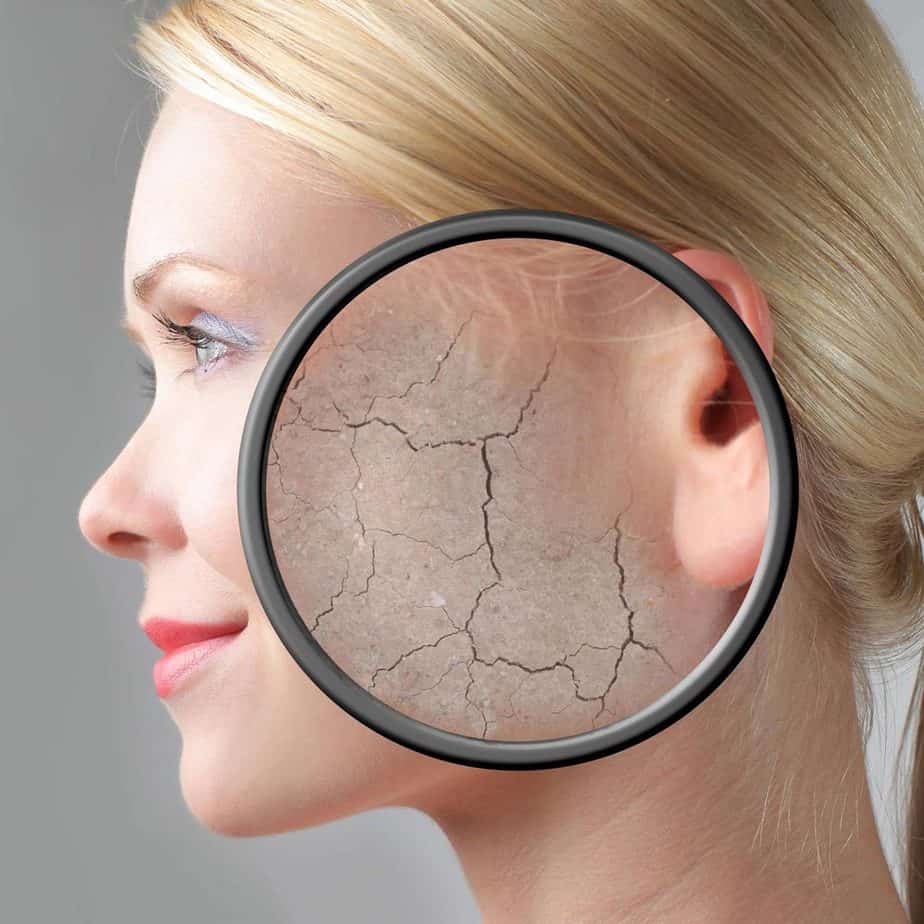Food as Medicine for Dry, Thin and Wrinkled Vata skin
Some people naturally have dry and thin skin due to their genetics and inherent characteristics. However, as we age, it is common for skin to become drier, thinner, and develop fine lines and wrinkles due to excess of Vata energy.
Healthy Vata skin is delicate and elegant. When imbalanced, it becomes dry, thin, dull, and wrinkles faster than other dosha types. Indicators of elevated Vata include droopy eyelids, non-inflamed pimples, chapped lips, lack of skin tone, dry eczema, and dry psoriasis. Despite using gentle moisturizers, toners, and heavy creams, dry, flaky skin can persist if the dryness is internal. To address this, it is important to balance Vata through dietary changes.
Vata, made up of air and ether elements, is characterized by light, dry, rough, mobile, and cold qualities. The main symptoms of Vata imbalance include dry skin, thin or rough skin, constipation, cold hands and feet, and anxiety or worry. In Ayurveda, Vata is balanced by incorporating opposite qualities, such as heavy, moist, smooth, steady, and warm.
An Ayurvedic approach to balancing Vata involves using food as medicine on multiple fronts. Firstly, to calm the mind, a person with high Vata imbalance is recommended to consume heavy, nourishing, grounding, and satisfying food. Secondly, foods that support the intestinal lining and improve digestion are also advised.
Ayurveda recognizes six tastes: sweet, salty, sour, bitter, astringent, and pungent. For Vata, the most beneficial tastes are sweet, salty, and sour. The sweet taste, made up of earth and water elements (which make Kapha energy), is heavy, moist, cool, smooth, soft, and nourishing. This is why people tend to crave sweet, comforting foods, like cookies, potatoes, bread, and sweets, when they are stressed. However, it is important to make healthy choices among foods with a sweet taste. Healthy sources of sweet taste in Ayurveda include most grains, meat, nuts, oils, and non-fermented dairy. These foods provide the building blocks for a healthy body and skin. The sweet taste helps create thicker, plumper skin if digestion and absorption are good.
The salty taste, composed of water and fire elements, is moist, warm, and relatively heavy. It helps hydrate the body and softens the skin by moisturizing mucous membranes. The salty taste also improves flexibility and elasticity, making it ideal for those with decreased appetite and weak digestion, common symptoms of elevated Vata. However, care must be taken with the salty taste as too little can lead to dehydration and too much can weaken the kidneys, and cause water retention, swelling, and wrinkles. Finding balance is key. Examples of the salty taste are Himalayan salt, seafood, seaweed, and kelp.
The sour taste in Ayurveda is composed of fire, earth, and a small amount of water elements, making it heavy, stable, hot, and slightly moist. The sour taste improves digestion by igniting the digestive fire and increasing appetite, which is crucial for people with elevated Vata. It also warms the body and improves blood circulation, resulting in a brighter complexion and improved delivery of nutrients and oxygen to all organs, including the skin. However, moderation is key. Overconsumption of sour taste can increase Pitta and damage the small intestine, causing hyperacidity. It is important to listen to the signals your body sends and use the sour taste in moderation. Healthy examples of the sour taste are sour fruits, sour tomatoes, and fermented foods like yogurt and kombucha. To balance high Vata, it is recommended to reduce the consumption of bitter, astringent, and pungent tastes in the diet. The bitter taste, composed of air and ether elements, shares similar qualities with Vata dosha - cold, light, mobile, and dry. This taste can lower digestive fire, leading to indigestion and toxic build-up in the body. It also results in reduced bodily tissues, including thinning of the skin and decreased collagen. The dry nature of the bitter taste can cause dryness in the digestive system, leading to dry stool and constipation, which can eventually affect other organs, including the skin, causing dryness. Excessive consumption of bitter taste can result in weight loss, dryness of tissues, insomnia, and poor blood circulation. Examples of the bitter taste include leafy greens as well as some herbs like dandelion and neem. The astringent taste is comprised of earth and air elements, which give it the qualities of being dry and cold. It is not very heavy nor very light, and it is not very mobile or very stable. The astringent taste is known for improving the tone of tissues, rather than strength or mass, and it benefits the skin by drying up secretions such as sores when applied topically. However, excessive consumption of the astringent taste can harm the colon and lead to dryness, gas, and constipation, all symptoms of Vata imbalance. Excessive astringent taste can also thin and reduce the plumpness of the skin. Examples of astringent taste include most beans, celery, cranberries, and pomegranate. The pungent taste is made up of fire and air elements, and it is hot, light, mobile, and dry. While Vata needs fire to improve circulation and digestion, the pungent taste is too hot. Excessive heat can dry out tissues, leading to wrinkles, thinner skin, sensitivity, and inflamed patches or bumps that don't contain pus. Examples of the pungent taste include very hot spices such as chili, cayenne, black pepper, and dry ginger.

